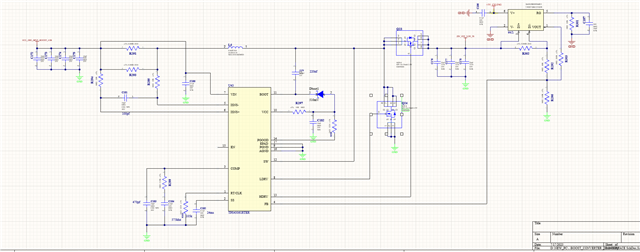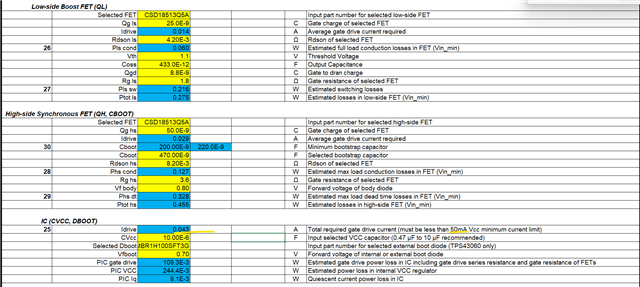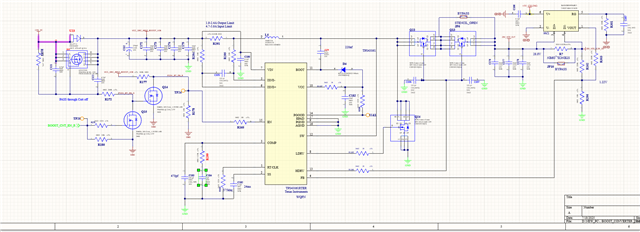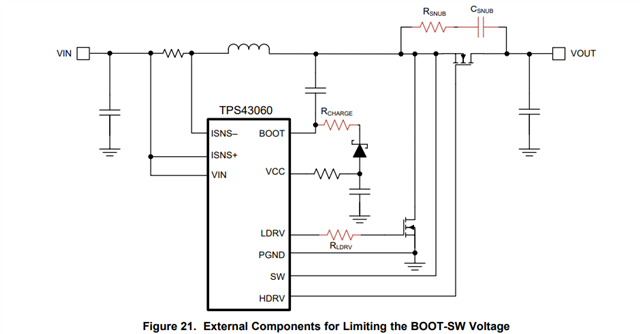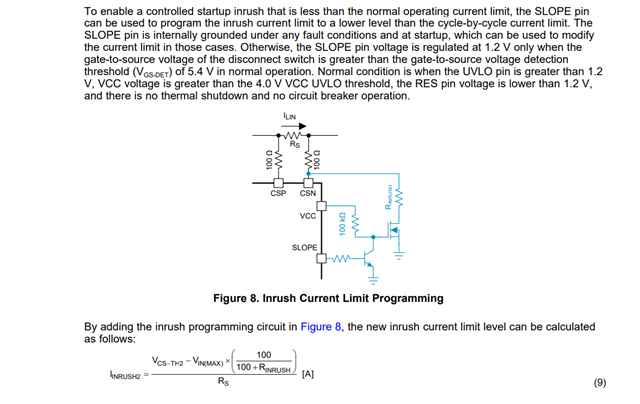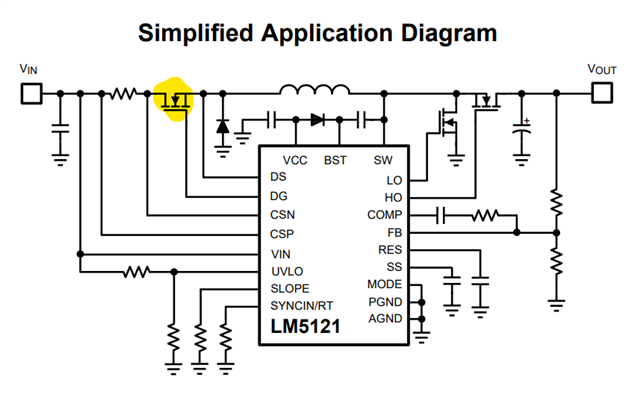Other Parts Discussed in Thread: LM5121, LM5155, LM5122
Tool/software:
I am having a requirement for designing a Boost converter for charging a capacitor 200mF to 28V at a constant current of 2A From a 15V power supply
after checking in We-bench TPS43061RTER its suggesting this part number After checking this has input current limit but its not very precise can i Add an external current sense feed back control loop to adjust Vfb ? Will this topology work ?
| Sense Resistor (RSENSE) | ||||||
| 20 | Vcs typ | 0.070 | 0.071 | 0.071 | V | Typical over-current current sense voltage based on Figure 19 in datasheet |
| Vcs min | 0.057 | 0.057 | 0.061 | V | Minimum over-current current sense voltage (10 mV below typical) | |
| 21 | Rsense max | 7.13E-3 | Ω | Maximum current sense resistor using Vcs min and 20% tolerance to account for efficiency and transients | ||
| Rsense chosen | 12.00E-3 | Ω | Selected sense resistor | |||
| 22 | P Rsense | 0.560 | W | Minimum power rating for current sense resistor in normal operating conditions | ||
| Ilim min | 4.713 | 4.753 | 5.095 | A | Minimum current limit with selected sense resistor | |
| Ilim typ | 5.848 | 5.890 | 5.928 | A | Typical current limit with selected sense resistor | |
| Estimated Efficiency | 93% | 96% | 97% | Estimated Efficiency | ||
| Iout max | 1.908 | 2.133 | 2.493 | A | Maximum output current using minimum over-current sense voltage | |
| Iout max | 2.436 | 2.717 | 2.955 | A | Maximum output current with typical over-current sense voltage | |
